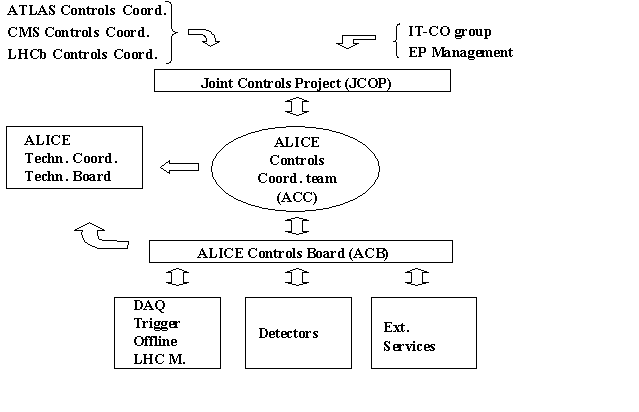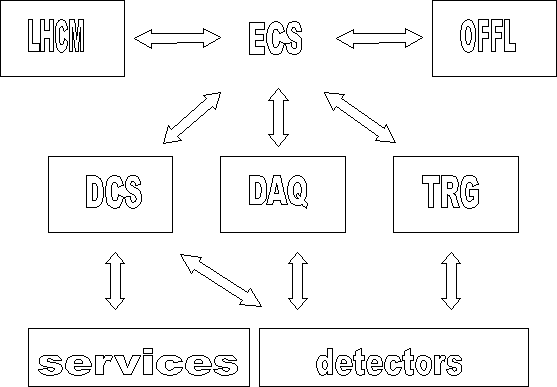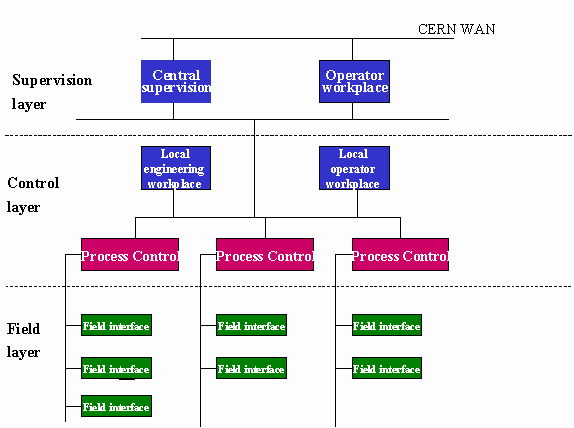|
6. Prototype development
In order to study and evaluate possible options of ‘standard solutions’ to be
used by the detector
groups it is absolutely necessary to gain "hands-on"
experience and develop prototype solutions.
Such prototype developments, which could be tried out in detector lab-tests
or in testbeams, will
be identified after discussions in ALICE Controls Board
and initiated by the ACC team in close
collaboration with a few detector groups,
which will be used as test cases. A few examples of such
prototypes are listed
below:
- Standard ways of measuring temperatures
- Control of HV systems
- Monitoring of LV power supplies
- Etc.
Furthermore, it is also necessary to prototype complete end-to-end detector
control slices including
the necessary functions at each DCS layer. This will
make use of the SCADA framework tools,
which presently are being developed
within the JCOP project.
7. Responsibilities
The responsibilities are shared between the different projects involved (see
fig. 1) and an overview
of "who is responsible for what" is sketched
below:
- ALICE Controls Co-ordination (ACC):
ACC is responsible for the co-ordination of the execution of the DCS
project. This involves monitoring of progress of the design, construction and
installation and follow-up of time-scales and budget of the different parts
forming the DCS. ACC is also responsible for giving guidelines and assistance
in the execution of the projects in view of obtaining a homogeneous Controls
System. The level of assistance is limited to the available manpower.
ACC is responsible for the provision of a common control structure including
common facilities and interfaces to external systems. (Subject to clarification
of JCOP responsibilities).
ACC provides access to common tools and components.
(See also ‘ALICE Controls Co-ordination Mandate’). |


